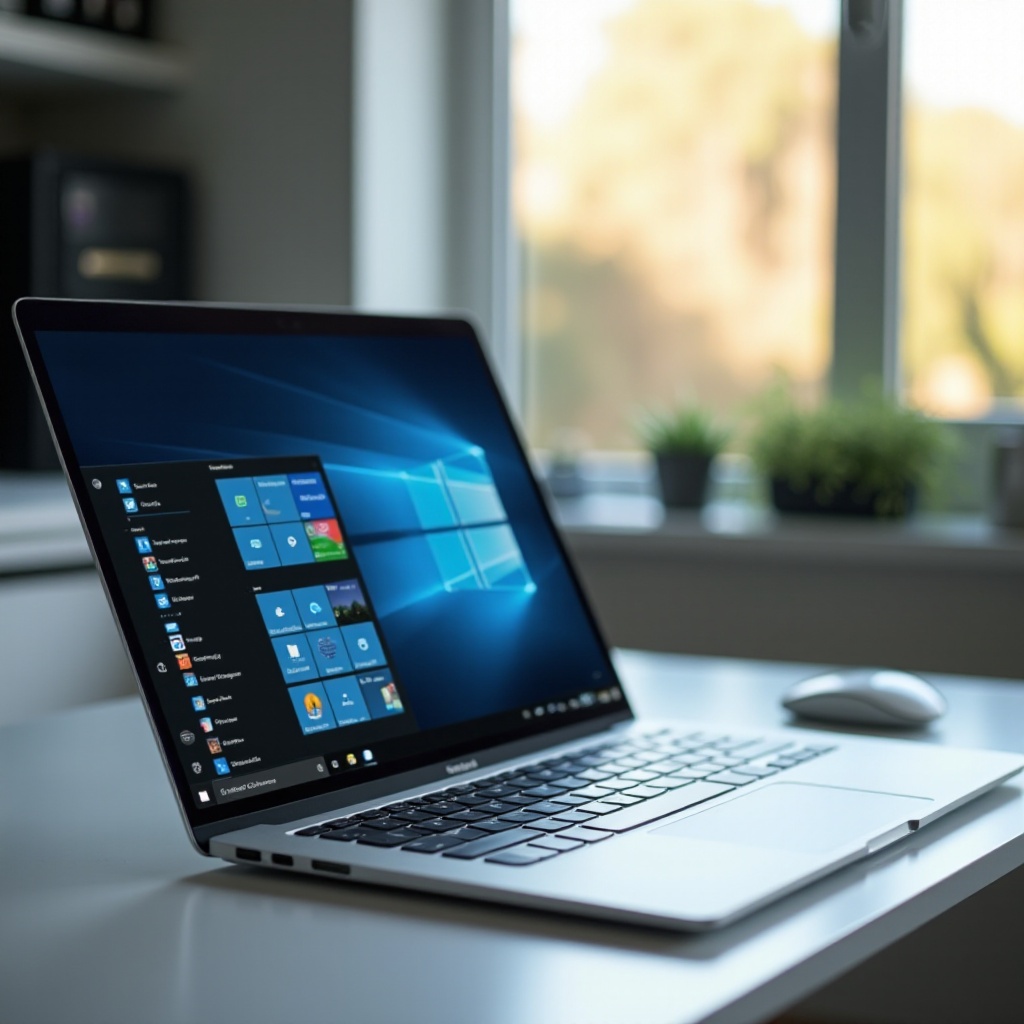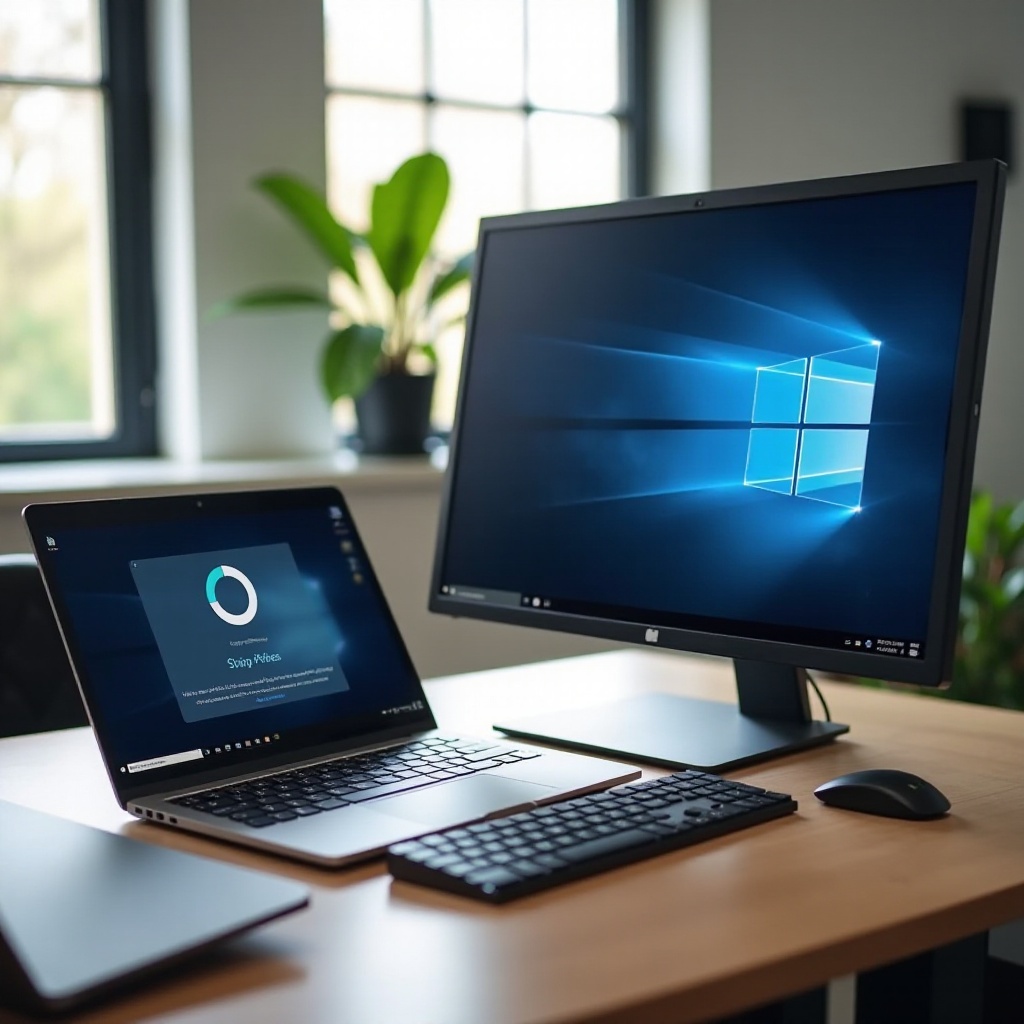Introduction
Switching your Windows laptop into desktop mode can elevate your productivity by providing a larger workspace and the opportunity for a more ergonomic setup. With the right accessories and a few simple steps, you can transform your portable laptop into a powerful desktop workstation. In this comprehensive guide, we will walk you through everything you need to know to seamlessly configure your Windows laptop in desktop mode for 2024. We’ll cover everything from preparing your hardware to optimizing your experience, so you can make the most out of this setup.

Understanding Desktop Mode on Windows
Desktop mode on Windows allows users to connect their laptop to external monitors, keyboards, and mice, turning it into a desktop-like setup. This setup is ideal for those who require multiple screens for multitasking or prefer using a full-sized keyboard and mouse for prolonged tasks. By understanding the benefits and functionalities of desktop mode, you can make an informed decision on whether this setup will enhance your productivity.
Before you get started, it’s important to know that using desktop mode doesn’t limit your laptop’s portability. You can easily switch back to laptop mode whenever needed. This flexibility makes it a great option for both home and office environments, providing the best of both worlds.
Preparing Your Hardware for Desktop Mode
Required Accessories
To put your Windows laptop into desktop mode, you’ll need a few essential accessories. These include:
- External Monitors: At least one, but potentially more depending on your needs.
- HDMI or DisplayPort cables: Ensure they are compatible with your laptop and monitor ports.
- External Keyboard and Mouse: Wired or wireless options can work, depending on your preference.
- Docking Station (optional): To make the connection process seamless and tidy.
Compatibility Check
Before purchasing any accessories, check your laptop’s compatibility. Look at the available ports and consider the recommended display output specifications. Most modern laptops support external monitors and USB peripherals, but verifying this can save you from any hassle later on.
Once you’ve gathered everything you need and confirmed compatibility, you’re ready to start setting up your desktop mode. This next section will guide you through the detailed steps to enable desktop mode.

Detailed Steps to Enable Desktop Mode
Connecting External Monitors
- Locate the Ports: Identify the HDMI, DisplayPort, or USB-C ports on your laptop.
- Connect the Monitor: Plug one end of the cable into your monitor and the other end into your laptop.
- Power On: Turn on your external monitor, and ensure it is set to the correct input mode.
Configuring Display Settings
- Access Display Settings: Right-click on your desktop and select ‘Display settings.
- Detect Displays: Click ‘Detect’ to identify your connected monitor.
- Arrange Displays: Organize how your displays are arranged by dragging the monitor icons to match your physical setup.
- Adjust Resolution: Set your desired resolution and scale settings for each monitor for optimal display quality.
Setting Up External Keyboard and Mouse
- Keyboard Setup: Connect your keyboard via USB or pair it via Bluetooth if wireless. Follow on-screen instructions if needed.
- Mouse Setup: Similarly, connect your mouse via USB or pair it via Bluetooth, ensuring it functions correctly.
Power Management
- Power Plan: Go to ‘Power & sleep settings’ and select a power plan that ensures optimal performance.
- Determine Lid Close Action: In the ‘Power options,’ configure what happens when you close the laptop lid. Select ‘Do nothing’ if you wish to keep the external monitors active while the laptop lid is closed.

Optimizing Your Desktop Mode Experience
Multi-Tasking Features
Windows provides several tools to enhance multitasking:
- Snap Assist: Drag and snap windows to the edges of the screen to organize your workspace efficiently.
- Task View: Use the Task View icon on the taskbar to switch between open applications seamlessly.
Customizing the Taskbar and Start Menu
- Pin Apps: Right-click on your frequently used applications and pin them to the taskbar for quick access.
- Resize and Customize: Adjust the size and appearance of icons to suit your workflow.
Setting Up Virtual Desktops
- Open Virtual Desktops: Click on the Task View button and select ‘New desktop.
- Organize Workspaces: Drag and drop open applications to the new virtual desktop to keep related tasks grouped.
Troubleshooting Common Issues
Display Problems
- Resolution Issues: Ensure that all connected monitors are set to their recommended resolution.
- Monitor Detection: If a monitor isn’t detected, check the cable connections and try rebooting the system.
Keyboard and Mouse Connectivity Issues
- Check Power Levels: Ensure that wireless keyboard and mouse batteries are charged.
- Verify Connections: For wired devices, ensure they are firmly connected to the USB ports.
- Driver Updates: Update your keyboard and mouse drivers through the Device Manager.
Performance and Power Management Tips
- Close Background Apps: Shut down unnecessary applications running in the background to free up system resources.
- Manage Startup Programs: Disable optional programs from starting automatically to speed up boot times.
- Regular Maintenance: Keep your system clean and updated to ensure smooth performance.
Conclusion
Switching your Windows laptop to desktop mode opens up a realm of productivity and comfort. With the right hardware preparations, step-by-step configurations, and a few optimization techniques, you can transform your laptop into a powerful desktop setup. This guide aims to provide you with all the necessary information to ensure a seamless and productive experience.
Frequently Asked Questions
Can I use a laptop docking station for desktop mode?
Yes, a laptop docking station can simplify the process of connecting multiple peripherals and monitors. It provides a central hub for all your devices, allowing for quick and easy setup.
How do I switch back to laptop mode?
To switch back to laptop mode, unplug the external monitors and peripherals. If you had customized the power management settings to keep the laptop running with the lid closed, ensure you revert these settings if necessary.
What are the advantages of using desktop mode on a Windows laptop?
Desktop mode enhances productivity by allowing you to use multiple screens, providing an ergonomic setup with external keyboards and mice, and enabling better multitasking capabilities. It offers the power and functionality of a desktop while retaining the mobility of a laptop.


